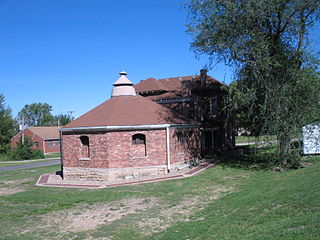 W
WA rotary jail was an architectural design for some prisons in the Midwestern United States during the late 19th century. Cells in the jails were wedges on a platform that rotated in a carousel fashion. The surrounding of the entire level had a single opening, allowing only one cell at a time to be accessible.
 W
WThe Old Allen County Jail is a former jail in Iola, Kansas, United States. Built in the late 1860s, it operated as a detention facility for nearly a century before a replacement opened; today, it is the Old Jail Museum, operated by the Allen County Historical Society, and it has been designated a historic site.
 W
WAnamosa State Penitentiary is a maximum security penitentiary prison located in the Jones County community of Anamosa, Iowa - approximately 25 miles (40 km) northeast of Cedar Rapids, Iowa.
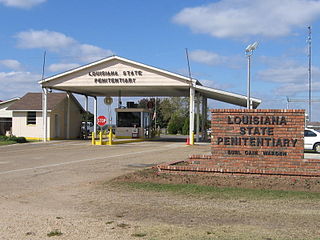 W
WThe Louisiana State Penitentiary is a maximum-security prison farm in Louisiana operated by the Louisiana Department of Public Safety & Corrections. It is named "Angola" after the former plantation that occupied this territory. The plantation was named for the African country that was the origin of many slaves brought to Louisiana.
 W
WBristol County Jail is a historic jail at 48 Court Street in Bristol, Rhode Island and home to the Bristol Historical and Preservation Society.
 W
WThe Burlington County Prison is a historic museum property, located next to the Burlington County Jail in Mount Holly Township, Burlington County, New Jersey, United States. Operating from 1811 to 1965, it was the oldest prison in the nation at the time of its closure. Designed by Robert Mills, its design exemplified period thinking in progressive prison design, with individual cells, good ventilation, and fireproof construction. Now operated by a local nonprofit as a museum, it was designated a National Historic Landmark in 1986.
 W
WCamden County Jail is a historic county jail located at Camden, Camden County, North Carolina. It was built in 1910, and is a two-story, nearly square brick building with a high hipped roof in the Colonial Revival style. On the second floor is the iron cellblock or "bullpen," likened to that of a large metal box.
 W
WThe Carbon County Jail is a historic jail located in Jim Thorpe, Carbon County, Pennsylvania.
 W
WCarthage Jail is a historic building in Carthage, Illinois, listed on the National Register of Historic Places (NRHP). It was built in 1839 and is best known as the location of the 1844 killing of Prophet Joseph Smith, founder of the Latter Day Saint movement, and his brother Hyrum, by a mob of approximately 150 men. It was added to the NRHP in 1973 and is operated by The Church of Jesus Christ of Latter-day Saints as a historic site with an adjacent visitors' center.
 W
WThe Castleton Jail is an exhibit building located at the Shelburne Museum in Shelburne, Vermont, United States. Constructed entirely of slate, it was originally built in 1890 in Castleton, Vermont, where it operated for over fifty years.
 W
WThe Cherokee National Jail or Cherokee National Penitentiary was built in 1874 as part of a governmental complex for the Cherokee Nation in Tahlequah, Oklahoma. It served the Cherokee Nation until it was sold to Cherokee County, Oklahoma, which used it as a jail into the 1970s.
 W
WThe Cheyenne County Jail, at 85 W. Second St. in Cheyenne Wells, Colorado, was built in 1894. It was a work of Denver architect Robert S. Roeschlaub with some Romanesque Revival styling. It is now operated as the Cheyenne Wells Old Jail Museum. It was listed on the National Register of Historic Places in 1988.
 W
WThe Clark County Jail is a historic structure located in Neillsville, Wisconsin. It was added to the National Register of Historic Places in 1978. Additionally, it is listed on the Wisconsin State Register of Historic Places and is designated a historic landmark by the Neillsville Historic Preservation Commission.
 W
WThe Debtors' Prison is a historic debtors' prison in Accomac, Virginia. Constructed in 1783 as a house for the Accomack County jailer, it is the oldest public structure in the county. It was converted to use as a debtors' prison in 1824, which purpose it served until 1849. The prison was added to the Virginia Landmarks Register and the National Register of Historic Places in 1976; along with structures in Worsham and Tappahannock, both in Virginia as well, it is one of only three debtors' prisons in the country on the National Register.
 W
WThe Dubuque County Jail is a historic building at 36 East 8th Street in Dubuque, Iowa, United States. Completed in 1858, the jail is an example of the uncommon Egyptian Revival style. It is architecturally a highly original work of John F. Rague, who also designed the 1837 Old Capitol of Illinois and the 1840 Territorial Capitol of Iowa. The building was designated a National Historic Landmark for its architecture in 1987. It served as a jail for more than a century, became a museum in 1975, and was converted into county offices in 2016.
 W
WThe Eastern State Penitentiary, also known as ESP, is a former American prison in Philadelphia, Pennsylvania. It is located at 2027 Fairmount Avenue between Corinthian Avenue and North 22nd Street in the Fairmount section of the city, and was operational from 1829 until 1971. The penitentiary refined the revolutionary system of separate incarceration first pioneered at the Walnut Street Jail which emphasized principles of reform rather than punishment.
 W
WThe Old Exchange & Provost Dungeon, also known as the Custom House, and The Exchange, is a historic building at East Bay and Broad Streets in Charleston, South Carolina, USA. Built in 1767–1771, it has served a variety of civic institutional functions, including notably as a prisoner of war facility operated by British forces during the American Revolutionary War. The building was designated a National Historic Landmark in 1973. It is now a museum operated by the Daughters of the American Revolution.
 W
WFive Oaks Museum, formerly known as the Washington County Museum, is a history museum in Washington County, Oregon, United States. It is located at the Rock Creek campus of Portland Community College (PCC), north of Beaverton, Oregon. From 2012 to 2017, its public exhibit space was located in downtown Hillsboro, Oregon, before it was moved back to PCC, its pre-2012 location and where the museum's research facility had already been located.
 W
WThe Gleeson Jail is a former jail located in the ghost town of Gleeson, Arizona. It was built in 1910 and restored in 2008.
 W
WThe former Hancock County Jail is located at 40 State Street in Ellsworth, the county seat of Hancock County, Maine. Built in 1885–86, it has a well-appointed living space for the jailer in the front, and a series of cells in the back. It was operated as a jail until the early 1970s, and is now home to the Ellsworth Historical Society, which operates it as a museum. It was listed on the National Register of Historic Places in 2008 for its architectural and historical significance.
 W
WHerkimer County Jail, also known as the 1834 Jail, is a historic jail in Herkimer, Herkimer County, New York. It is a two-story structure with high basement, five bays wide, of ashlar limestone blocks with dressed quoins built in 1835. It features a gable roof with oval window and narrow cornice and a Federal style entrance. Tours are regularly given by the Herkimer County Historical Society and a museum display highlights the cases of Chester Gillette and Roxalana Druse.
 W
WThe Jackson County Jail and Marshal's House in Independence, Missouri, United States is a building constructed in 1859 to serve as a county jail for Jackson County, Missouri. It served in this capacity until 1933, when it was decommissioned and replaced with another structure. More recently, it has been restored and opened to the public as a museum. It was listed on the National Register of Historic Places in 1970.
 W
WJohnson's Island is a 300-acre (120 ha) island in Sandusky Bay, located on the coast of Lake Erie, 3 miles (4.8 km) from the city of Sandusky, Ohio. It was the site of a prisoner-of-war camp for Confederate officers captured during the American Civil War. Initially, Johnson's Island was the only Union prison exclusively for Confederate officers but eventually held privates, political prisoners, persons sentenced to court martial and spies. Civilians who were arrested as guerrillas, or bushwhackers, were also imprisoned on the island. During its three years of operation, more than 15,000 men were incarcerated there.
 W
WThe first jail was built in 1837 of 14 inches (36 cm) square logs. It was two stories tall with a trap door from the second story floor to access the ground floor. The next jail was made of brick. Like the first jail, it was located on Courthouse Square. By 1869 this second structure was in serious need of repair. Frequent jail breaks from the second jail, led the county to hire George Garnsey of Chicago to design a new jail. The most notable jailbreak resulted when prisoners pushed bricks out of the wall.
 W
WThe Laogai Museum is a museum in Dupont Circle, Washington, D.C., United States, which showcases human rights in the People's Republic of China, focusing particularly on the Láogǎi, the Chinese prison system of "Reform through Labor". The creation of the museum was spearheaded by Harry Wu, a well-known Chinese dissident who himself served 19 years in laogai prisons; it was supported by the Yahoo! Human Rights Fund. It opened to the public on 12 November 2008, and Wu's non-profit research organization calls it the first museum in the United States to directly address the issue of human rights in China.
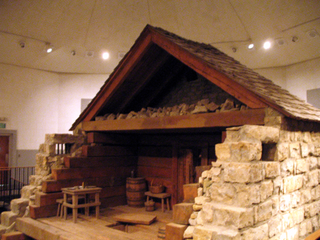 W
WLiberty Jail is a historical jail in Liberty, Missouri, United States, which served as the county jail of Clay County, Missouri between 1823 and 1853. The jail is known in the Latter Day Saint movement due to the imprisonment of Joseph Smith and some of his associates during the 1838 Mormon War.
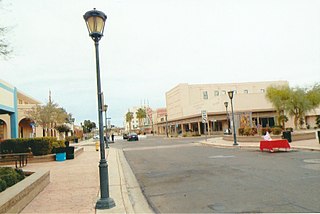 W
WThis is a list of historic properties in Yuma, Arizona, which includes a photographic gallery of some of the remaining historic structures and monuments. Yuma is the county seat of Yuma County, Arizona, United States. It is located in the southwestern corner of the state. Yuma is the site of one of the few National Historic Landmarks in the Southwest. Included in this list are photographs of some of the structures within the Yuma Downtown Historic District, the Yuma Quartermaster Depot, which today is a state historic park and the Yuma Territorial Prison a Yuma landmark.
 W
WThe Luce County Sheriff's House and Jail was originally built as a correctional facility and government building at 411 West Harrie Street in Newberry, Michigan, United States. It was listed on the National Register of Historic Places in 1982 and designated a Michigan State Historic Site in 1975.
 W
WThe Old McCulloch County Jail is located in Brady, McCulloch County, in the U.S. state of Texas. It was added to the National Register of Historic Places listings in McCulloch County, Texas in 1975, and became a Recorded Texas Historic Landmark in 1976. In 1963, the Texas Historical Commission designated the geographical center of Texas as being located 5 miles (8.0 km) northwest of Brady. The old jail became the Heart of Texas Historical Museum in 1974. A granite monument to the center of Texas can be found on the grounds of the McCulloch County Courthouse.
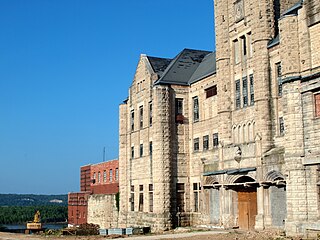 W
WThe Missouri State Penitentiary was a prison in Jefferson City, Missouri, that operated from 1836 to 2004. Part of the Missouri Department of Corrections, it served as the state of Missouri's primary maximum security institution. Before it closed, it was the oldest operating penal facility west of the Mississippi River. It was replaced by the Jefferson City Correctional Center, which opened on September 15, 2004.
 W
WThe Montana State Prison is a men's correctional facility of the Montana Department of Corrections in unincorporated Powell County, Montana, about 3.5 miles (5.6 km) west of Deer Lodge. The current facility was constructed between 1974 and 1979 in response to the continued degeneration of the original facility located in downtown Deer Lodge.
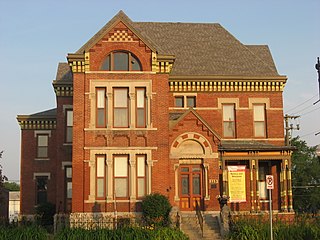 W
WMontgomery County Jail and Sheriff's Residence is a historic jail and sheriff's residence located at Crawfordsville, Montgomery County, Indiana. It was built in 1882 in two sections, and is a 2 1/2-story, red brick and limestone building in a combination of Italianate, Gothic Revival, and Romanesque Revival style architecture. The jail is a "rotary jail"; it is the only example of this type in Indiana and one of two left in the United States. The building houses a local history and prison museum.
 W
WThe Museum of Colorado Prisons is located off U.S. Highway 50 in Cañon City, Colorado. It is housed in a former state women's prison and is directly east of the Colorado Territorial Correctional Facility.
 W
WThe National Museum of Crime and Punishment, also known as the Crime Museum, was a privately owned museum dedicated to the history of criminology and penology in the United States. It was located in the Penn Quarter neighborhood of Washington, D.C., half a block south of the Gallery Place station. The museum closed in 2015 and is now operated as Alcatraz East, a museum in Pigeon Forge, Tennessee.
 W
WThe Ohio State Reformatory (OSR), also known as the Mansfield Reformatory, is a historic prison located in Mansfield, Ohio in the United States. It was built between 1886 and 1910 and remained in operation until 1990, when a United States Federal Court ruling ordered the facility to be closed. While this facility was used in a number of films, TV shows and music videos, it was made famous by the film The Shawshank Redemption (1994) when it was used for the majority of the movie.
 W
WThe Old Garrard County Jail is a historic Italianate-style building in Lancaster, Kentucky that was added to the United States National Register of Historic Places in 1984.
 W
WBarnstable's Old Gaol is a historic colonial jail in Barnstable, Massachusetts. Built c.1690, it is the oldest wooden jail in the United States of America.
 W
WThe Old York Gaol is a former colonial prison at Lindsay Road and Main Street in York, Maine. Its oldest portion dating to about 1720, it is one of the oldest prison buildings in the United States, and one of the oldest public buildings in the state of Maine. It was designated a National Historic Landmark in 1968. It is owned by the Museums of Old York and is open for tours between May and October.
 W
WThe Pepin County Courthouse and Jail is located in Durand, Wisconsin. In 1982, the site was added to the National Register of Historic Places. Additionally, it is listed on the Wisconsin State Register of Historic Places.
 W
WThe Pottawattamie County Jail, also known as 'Squirrel Cage Jail' in Council Bluffs, Iowa, United States was built in 1885 and it was listed on the National Register of Historic Places in 1972. The building is a Squirrel Cage Jail, also known as a Rotary Jail.
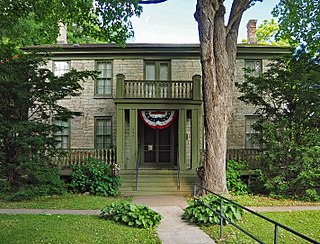 W
WThe Warden's House Museum is a historic house museum in Stillwater, Minnesota, United States. From 1853 to 1914 it was the official residence for the wardens of the Minnesota Territorial Prison, which became the Minnesota State Prison upon statehood in 1858. The Washington County Historical Society has operated the house since 1941, making it the second-oldest house museum in Minnesota. It was listed on the National Register of Historic Places in 1974 as the Minnesota Territorial/State Prison Warden's House for having state-level significance in the themes of architecture and social history. It was nominated for being the only surviving structure of the prison's Minnesota Territory period and the chief remnant of its statehood years.
 W
WThe West Virginia Penitentiary is a gothic-style prison located in Moundsville, West Virginia. Now withdrawn and retired from prison use, it operated from 1876 to 1995. Currently, the site is maintained as a tourist attraction and training facility.
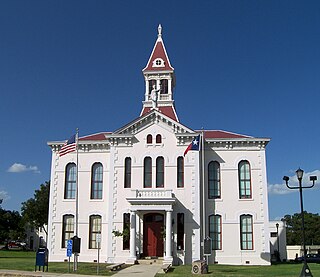 W
WThe Wilson County Courthouse and Jail are located in Floresville, Texas. They were added to the National Register of Historic Places in Texas in 1978 and the courthouse as a Recorded Texas Historic Landmark in 1984.
 W
WThe Wiscasset Jail and Museum is a historic jail on at 133 Federal Street in Wiscasset, Maine. Built in 1811, it is one Maine's oldest surviving jail buildings, serving as the state's first penitentiary between 1820 and 1824. It is now a museum operate by the Lincoln County Historical Society as the 1811 Lincoln County Museum and Old Jail. It was listed on the National Register of Historic Places in 1970.
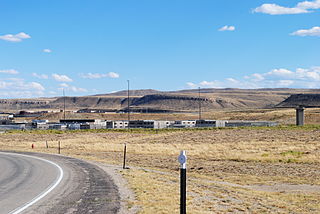 W
WThe Wyoming State Penitentiary is a historic and current prison in Rawlins, Carbon County, Wyoming, which has operated from 1901. It moved within Rawlins to a new location in 1981. In 2018, it is a Wyoming Department of Corrections state maximum-security prison for men.
 W
WThe Yuma Territorial Prison is a former prison located in Yuma, Arizona, United States. Opened on July 1, 1876, and shut down on September 15, 1909. It is one of the Yuma Crossing and Associated Sites on the National Register of Historic Places in the Yuma Crossing National Heritage Area. The site is now operated as a historical museum by Arizona State Parks as Yuma Territorial Prison State Historic Park.